Welcome to another blog of the Surviving series. In this blog, I am going to give you the ultimate guide for surviving and thriving while camping in the forest! Imagine the sun setting behind towering trees, the crackle of a campfire, and the soothing sounds of nature all around you. Whether you’re a seasoned camper or a first-timer, being prepared is key. From choosing the perfect campsite to dealing with wildlife encounters, this blog will equip you with essential tips to ensure your forest adventure is both safe and unforgettable. Ready to become a wilderness survival pro? Let’s dive in!
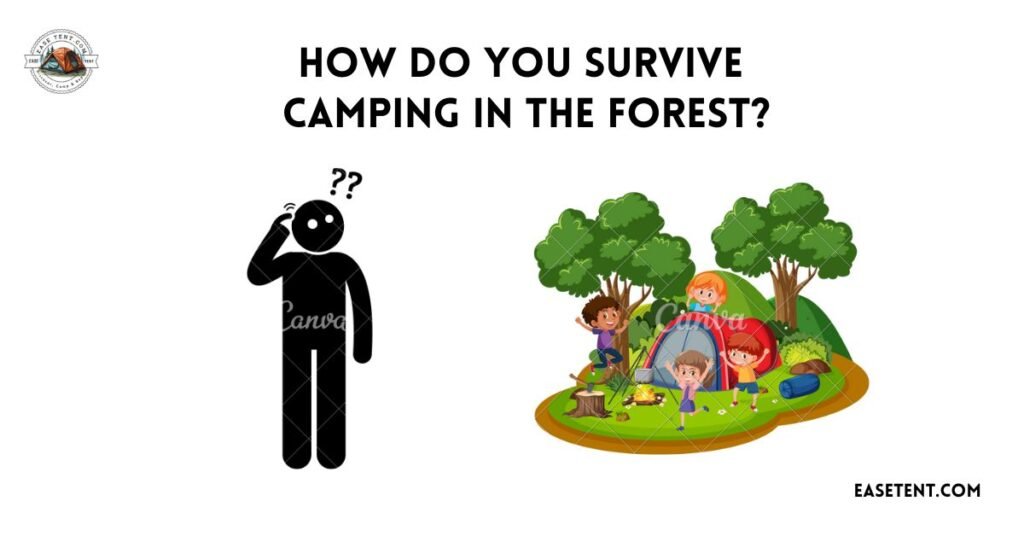
Table of Contents
Pre-Trip Preparations
Research the area
Before heading out on any outdoor trip, the first thing you have to do is research the area that you’ll be visiting. This means looking into the climate and weather patterns to understand the conditions you’ll be facing. For example, if rain is common, make sure to pack appropriate gear.
There’s nothing worse than being caught in an unexpected rainstorm without the right equipment!
It’s also vital to learn about the local wildlife. Knowing which animals inhabit the area can help you prepare for potential encounters and take necessary precautions. Some forests may have bears, while others might have snakes or other critters (any living creature from a wolf to a spider) you need to be aware of.
Additionally, check for any specific regulations or guidelines for camping in that particular forest. Some areas might have restrictions on campfires, designated camping spots, or rules about interacting with wildlife. Being aware of these rules and regulations not only keeps you safe but also ensures you respect the environment and local rules.
Packing essentials
When it comes to camping in the forest, packing the right essentials is key to a successful and enjoyable trip. I will do my best to give you the best tips so you have to backpack as little as possible also to maintain that level of comfort and obviously be able to survive if the weather turns or if things go hard.
Clothing
Make sure to pack layers that you can easily add or remove depending on the weather. Lightweight, moisture-wicking fabrics are great for staying comfortable. Don’t forget a waterproof jacket and sturdy hiking boots. Personally, I always bring an extra pair of socks—there’s nothing like a dry pair of socks after a long day of hiking.
A warm long-sleeve base layer (Merino wool) type of clothing is the best because it is super comfortable but it is also breathable and doesn’t smell for days.
Shelter
A good-quality tent that’s appropriate for the season is a must. Make sure it’s easy to set up and provides adequate protection from the elements. You’ll also need a sleeping bag that’s suitable for the temperatures you’ll be facing, and a sleeping pad for added comfort and insulation from the ground.
Next, you’re going to need a good tent, make sure the tent is lightweight so you don’t need to worry about its transport.
A tip on how to split the tent weight if you are in a group camping
If you are camping with a group of friends or family. Make sure to split the weight of the tent-like you will take the actual tent fabric or your other mates divide the other parts of the tent such as ground sheet rain flies, tent poles, and stakes. That’s a good way to evenly divide the tent’s weight and minimize the risk of back soreness.
Check the Weather Forecast
One of the most important steps before any camping trip is to check the weather forecast. Knowing what to expect weather-wise can significantly influence what you pack and how you prepare.
Start by looking at the forecast for the entire duration of your trip, and give close attention to any significant changes in weather patterns. If there’s a chance of rain, you’ll want to make sure you pack waterproof gear and maybe even reconsider your plans if severe weather is predicted. I’ve learned the hard way that getting caught in a storm without the right gear can quickly turn a fun trip into a miserable one.
Temperature fluctuations are also crucial to note. Forests can have a wide range of temperatures between day and night. During the day, it might be warm enough for shorts and t-shirts, but nighttime temperatures can drop significantly. In such cases, packing layers becomes essential so you can stay comfortable and safe.
Wind conditions are another aspect to consider. High winds can make setting up camp challenging and can also create danger, especially if you’re camping in areas with tall trees or loose branches. Personally, if I see that strong winds are expected, I look for more sheltered camping spots and ensure my tent is securely anchored.
Lastly, check for any specific weather warnings or alerts for the area. This could include things like fire warnings in particularly dry conditions, which might mean campfires are restricted. Knowing these details in advance helps you plan appropriately and stay safe.
Informing someone about your trip
Before you head out on your camping trip, it’s important to let someone know your plans. This simple step can make a big difference in case of an emergency.
Start by telling a family member or a friend about your trip. Give them details like where you’re going, when you’re leaving, and when you plan to return. If you have a specific route or campsite in mind, share that information as well.
It’s also a good idea to provide them with a map of the area and your planned route. This way, if something goes wrong and you don’t return as expected, they can give accurate information to search and rescue teams.
In addition, let them know how often you’ll check in, if possible. If you have a cell phone signal or a satellite communicator, you can set times to check in and let them know you’re safe.
I always make sure to inform someone about my trip before I leave. It gives me peace of mind knowing that someone knows where I am and can send help if needed. It’s a small step that can make a big difference in ensuring your safety.
Set Up Your Tent Properly
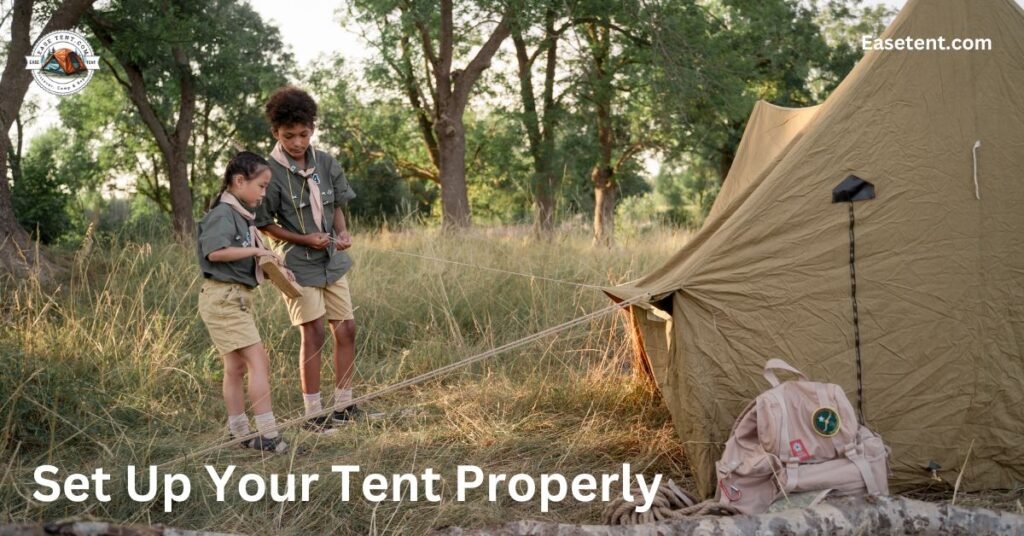
Choosing the right campsite
Finding a good campsite in the backcountry is more than finding just a flat piece of ground. I am going to tell you “what I look for” when I am trying to find the perfect camp spot because I’ve spent hundreds of nights in the backcountry so these tips come through from my personal experience. Let’s dive into “how to find a perfect camp spot?”
Be patient when finding a place to camp
It’s really easy to walk a little way and just look for that first campsite but I promise you finding the right spot is worth the wait with a good night’s rest. So, just walk a little extra to find an ideal place for those hours you are going to spend at that campsite.
A flat piece of ground is the most important thing
When setting up camp, finding a flat piece of ground is the most important thing you can do. A flat surface ensures that your tent is stable and that you’ll have a comfortable place to sleep.
First, flat ground prevents your tent from sliding or shifting, which can happen on uneven terrain. This stability is crucial, especially in windy conditions. I’ve found that a tent set up on flat ground stays secure and keeps me comfortable throughout the night.
Second, sleeping on a flat surface means you won’t have to deal with uncomfortable lumps and bumps from rocks, roots, or slopes. This makes a big difference in how well you sleep. After all, a good night’s rest is essential for enjoying your camping adventure.
Finding a flat piece of ground might take a little extra time, but it’s well worth the effort. It’s the foundation of a good campsite and can significantly enhance your overall camping experience.
Avoid a place where rainwater might run through your campsite
If you find a nice piece of flat ground but you see a ravine (a way of water) obviously you have to avoid setting up camp in these areas because Low-lying spots or natural depressions can quickly become waterlogged, turning your campsite into a muddy mess. I always choose a slightly elevated area to ensure that rainwater drains away from my tent, keeping my gear dry and my camping experience comfortable.
So, I recommend you to not camp anywhere nearer to the ravine and be very conscious to always check if there’s any kind of ravine or anything that might indicate the water could come running down through your camp if there’s any rain.
Just because someone camped there before does not make it the best camping spot
Just because you see signs that someone camped in a spot before doesn’t mean it’s the best place for you. Previous campers might not have chosen the safest or most comfortable site. Always evaluate the area yourself, looking for flat ground, good drainage, and safety from hazards like falling branches. I’ve learned to trust my own judgment to find the best campsite rather than relying on what others might have used.
Look above you (Look Up for things that Could Fall Down and Cause Harm)
When choosing a campsite, always look above you to check for potential hazards. Dead or overhanging branches can fall, especially in windy conditions, posing a serious risk. I always make sure to select a spot clear of these dangers to ensure my safety. Being mindful of what’s overhead can prevent accidents and give you peace of mind as you sleep.
Proximity to water
Choosing a campsite near a water source is convenient for cooking, cleaning, and staying hydrated. However, avoid camping too close to the water to reduce the risk of flooding and to protect the natural environment. I typically set up camp about 200 feet away from a river or lake, which strikes a good balance between accessibility and safety.
Fire and Cooking
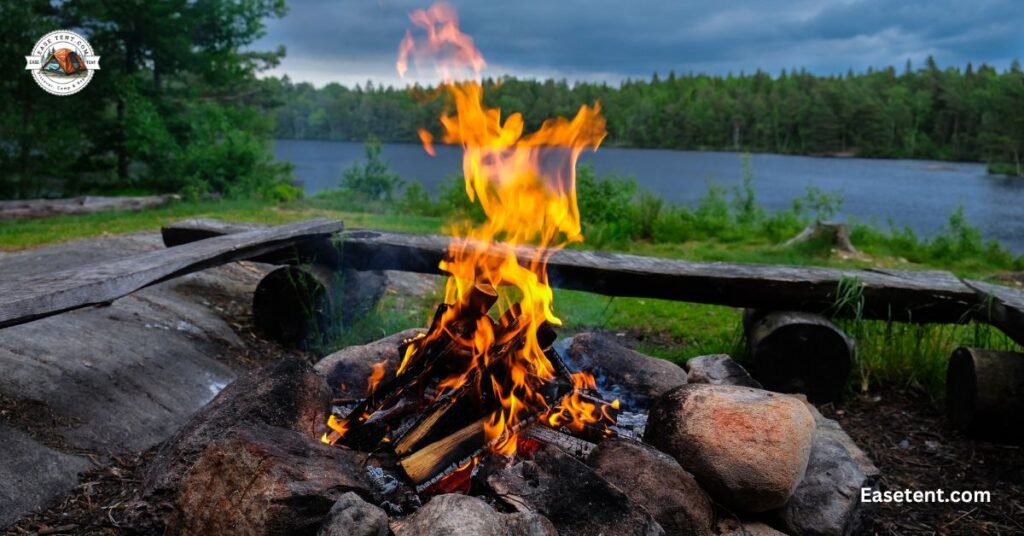
Building a safe campfire
Gathering Firewood
When gathering firewood, collect three types: tinder, kindling, and fuel wood. Tinder includes small, dry materials like branches, leaves, and bark that catch fire easily. Kindling consists of slightly larger sticks and small branches to help the fire grow. Fuel wood includes larger logs that will keep the fire burning longer so you can easily cook whatever you want. Make sure all wood is dry to ensure it burns well and produces less smoke. I always avoid taking wood from live trees to preserve the forest environment.
Fire Safety Tips
Fire safety is paramount. Always build your fire in a designated fire ring or create a fire pit surrounded by stones to contain it. Keep your fire small and manageable, and never leave it unattended. Clear the area around your fire of leaves, grass, and other flammable materials. Have a bucket of water and a shovel nearby to extinguish the fire quickly if needed. I always make sure to completely extinguish my fire by dousing it with water, stirring the ashes, and repeating until everything is cool to the touch.
Cooking in the wild
Simple, Nutritious Meal Ideas
When cooking in the wild, simple and nutritious meals are the way to go. Pack easy-to-cook items like instant oatmeal for breakfast, sandwiches or wraps for lunch, and pre-cooked pasta, rice, or canned goods for dinner. Bringing along fresh vegetables and protein-rich foods like beans, canned tuna, or pre-cooked chicken can add nutrition to your meals. I often prepare and portion meals ahead of time to make cooking at the campsite quick and hassle-free.
Safe Food Storage
Safe food storage is crucial to avoid attracting wildlife. Store all food in airtight containers or specialized bear-proof canisters. Hang food bags from a tree branch at least 12 feet off the ground and 6 feet away from the trunk, or use designated food storage lockers if available. I always make sure to clean up any food scraps and wash dishes well away from my sleeping area to keep my campsite safe and wildlife-free.
Look for Some natural water sources
Finding water sources
Natural water sources (streams, lakes)
Finding reliable water sources in the wild is key to staying hydrated. Try to make your campsite around streams, rivers, lakes, or ponds, this ensures you have unlimited fresh water just a few steps away. The water sources should be flowing rather than stagnant such as dams and lagoons whenever possible, because flowing water is less likely to be contaminated. I always collect water upstream from where I camp and avoid areas with visible pollution or dead animals nearby.
Signs of safe and freshwater
Before using water from natural sources, check for signs of safety. Clear, flowing water is generally safer than stagnant or cloudy water. Look for sources away from human and animal activity to minimize contamination risks. If unsure, consider using a water filter or purification method to make water safe for consumption.
Purifying water
Boiling
Boiling water is one of the most effective methods to purify it in the wild. Bring water to a rolling boil for at least one minute (or three minutes at higher altitudes) to kill pathogens and make it safe to drink. Don’t forget to allow the water to cool before consuming or storing it.
Filtration systems
Using a water filtration system is another reliable way to purify water. Portable water filters are designed to remove bacteria, protozoa, and sometimes viruses from water sources. Look for filters with a pore size of 0.2 microns or smaller for best results. Follow the manufacturer’s instructions for proper use and maintenance to ensure effectiveness.
Wildlife Safety

Understanding Local Wildlife
Before heading into the forest, it’s important to understand the types of wildlife you might encounter. Research the local animals, including common behaviors and habitats. Knowing whether you might encounter bears, snakes, or other wildlife helps you prepare and take appropriate precautions. I always take note of any recent wildlife sightings or warnings in the area to stay informed.
How to Avoid Attracting Animals
Food Storage Techniques
Proper food storage is crucial to avoid attracting animals to your campsite. Use airtight containers or bear-proof canisters to store all food and scented items, including toiletries and trash. Hang food bags at least 12 feet off the ground and 6 feet away from tree trunks, or use designated food storage lockers if available. I make sure to clean up all food scraps and wash dishes well away from my sleeping area to keep my campsite safe and wildlife-free.
What to Do If You Encounter Wildlife
If you encounter wildlife, stay calm and avoid sudden movements. For larger animals like bears, make yourself look bigger by raising your arms and speaking in a firm voice while slowly backing away. Never run, as this can trigger a chase response. For snakes, slowly and carefully move away from them, giving them plenty of space. Always keep a safe distance and respect wildlife by observing them from afar. I carry bear spray in bear country as an added precaution, and I always follow local guidelines for wildlife encounters to ensure safety.
For bears: Stand your ground, make yourself look larger, and make noise to scare it away. Do not run. If the bear approaches, use bear spray if you have it.
For snakes: Back away slowly and give the snake plenty of space to escape.
For large predators (like mountain lions): Make yourself appear larger, maintain eye contact, and back away slowly without turning your back.
Navigation and Safety skills
Using a map and compass
GPS devices
Using a Map and Compass
Knowing how to use a map and compass is essential for navigating in the wilderness. Start by familiarizing yourself with the map of the area, noting key landmarks, trails, and your planned route. A compass helps you orient the map to match the terrain, ensuring you head in the right direction. Practice taking bearings and following a compass course to build confidence. I always double-check my bearings and keep track of my location to avoid getting lost.
GPS Devices
GPS devices are incredibly useful for navigation, offering real-time positioning and route tracking. Make sure your device is fully charged and bring extra batteries or a portable charger. While GPS is convenient, it’s important to remember that technology can fail, so always have a map and compass as a backup. I rely on my GPS for detailed tracking but never venture out without my trusty map and compass.
Staying on marked trails
Staying on marked trails is crucial for both safety and environmental preservation. Marked trails are designed to guide you safely through the terrain, avoiding dangerous areas like cliffs, unstable ground, dense underbrush, and slippery ways around mountains during monsoon. By sticking to these paths, you reduce the risk of getting lost and encountering unexpected hazards.
In addition to safety, staying on trails helps protect the environment. Off-trail hiking can damage vegetation, disturb wildlife, and contribute to soil erosion. I always make it a point to follow marked trails, not just for my own safety but also to minimize my impact on the natural surroundings.
If you ever feel attracted to venture off the trail, remember that staying on the designated path is the best way to ensure a safe and enjoyable hiking experience while preserving the beauty of the wilderness for others.
What to do if you get lost
Getting lost in the wilderness can be one of the most daunting experiences of anyone’s life, but staying calm and taking the right steps will be the key to finding your way back safely.
Stay Calm: Panic can cloud your judgment. Take deep breaths and stay where you are. Moving around without a plan can make it harder for rescuers to find you.
Assess Your Situation: Check your surroundings and try to remember any landmarks you passed. Use your map and compass or GPS device to determine your location. If you have a whistle, blow it periodically to alert others to your presence.
Signal for Help: If you have a whistle, blow three short blasts, which is a universal distress signal. If you have a flashlight, use it to create visible signals at night. During the day, you can use bright clothing or objects to attract attention.
Build a Shelter: If you realize you may be stuck for a while, start building a shelter to protect yourself from the elements. Look for natural features like caves or large trees that can provide cover, or use a tarp or wrap to create a temporary shelter.
Stay hydrated and warm: Drink water to stay hydrated and use layers of clothing to keep warm. If you have the means to build a fire, do so to stay warm and to signal for help.
Use Your Navigation Tools: If you feel confident about your navigation skills, use your map and compass or GPS to try to backtrack to the last known location. However, if you’re unsure, it’s safer to stay put and wait for help.
By staying calm, signaling for help, and taking steps to protect yourself, you can greatly increase your chances of being found and rescued. I always carry basic survival gear and make sure I’m familiar with these steps just in case.
Some Important Emergency procedures
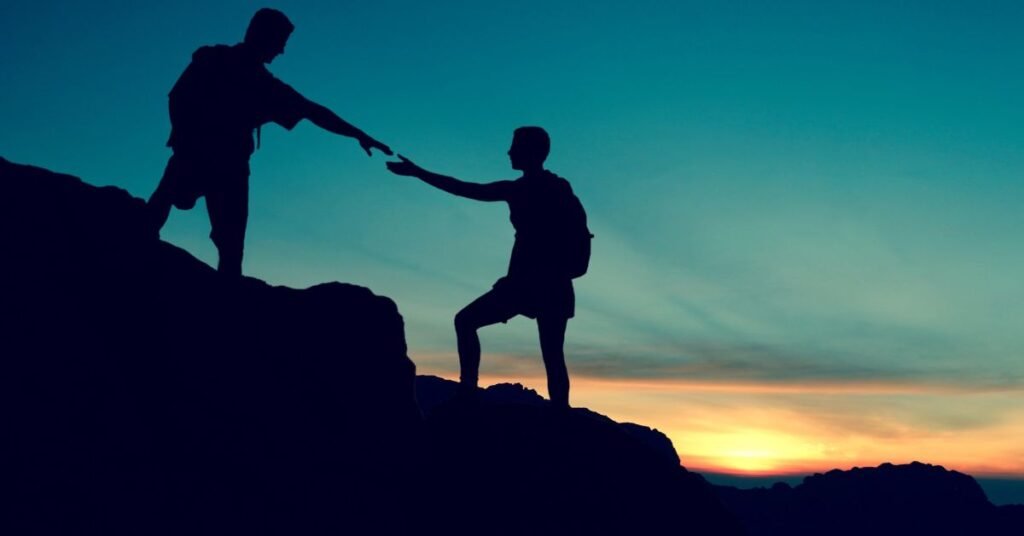
Signaling for help
When you’re in an emergency situation, effectively signaling for help is crucial. Use a whistle to blow three short blasts, which is a universal distress signal. If you have a flashlight, flash it three times at night. During the day, use a mirror or any reflective surface to catch the sunlight and direct it towards rescuers or passing aircraft. Brightly colored clothing or objects can also be used to create visible signals. Building a fire can serve a dual purpose—keeping you warm and creating smoke signals that can be seen from a distance. I always carry a whistle, flashlight, and mirror as part of my emergency kit to ensure I have multiple ways to signal for help.
Staying calm and collected
In an emergency, staying calm and collected is essential. Panic can lead to poor decisions and worsen the situation. Take deep breaths and assess your situation rationally. Focus on immediate needs like shelter, water, and warmth. Use the STOP method: Stop, Think, Observe, and Plan. This helps you take a step back, gather your thoughts, and create a plan of action. Remember, keeping a clear head will increase your chances of making it through the situation safely. I always remind myself of this approach to maintain composure and think clearly during emergencies.
Always Bring a First-aid Box While Camping in the Forest
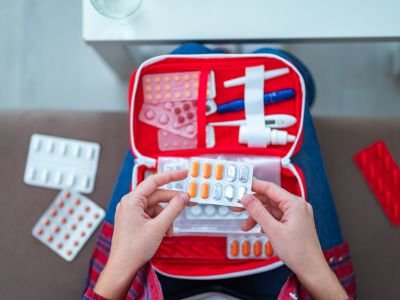
Having a first aid kit in your backpack is essential whether you are just out for a day or spending multiple nights on the trail. Accidents and injuries can happen unexpectedly, and being prepared for them can make a significant difference.
These are the most important things no kit should be without.
Thermometer
A thermometer is used to examine the body temperature.
Medical Gloves
Without examination gloves, first aid can be messy, so bring gloves to ensure the wound stays clean and keeps you safe from bodily fluids.
Alcohol Swabs
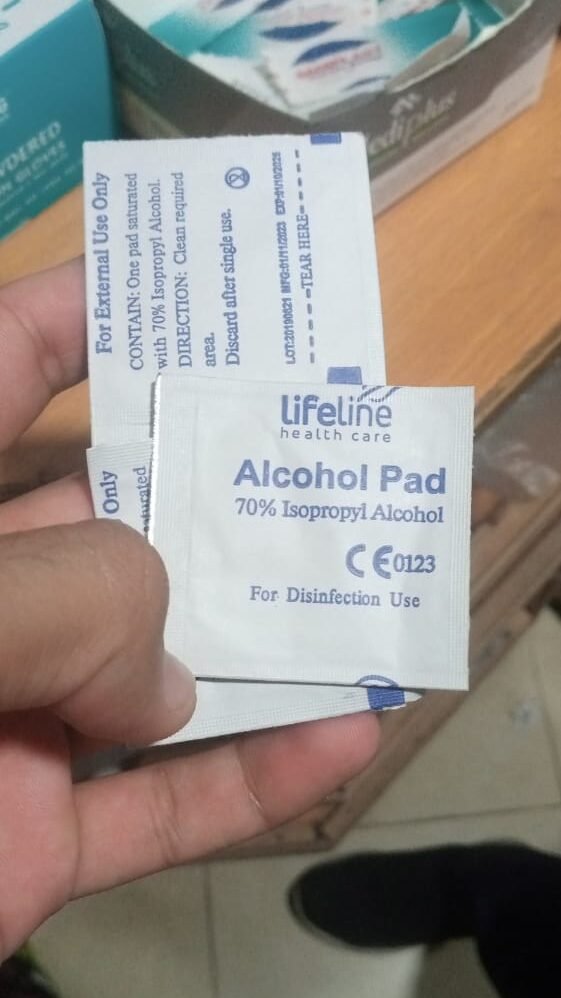
Alcohol swabs are used to clean the wound before dressing the wounds.
Povidone Iodine
Povidone is the most effective way to disinfect the wound without any pain. It is applied before the surgical dressing.
Surgical Gauze
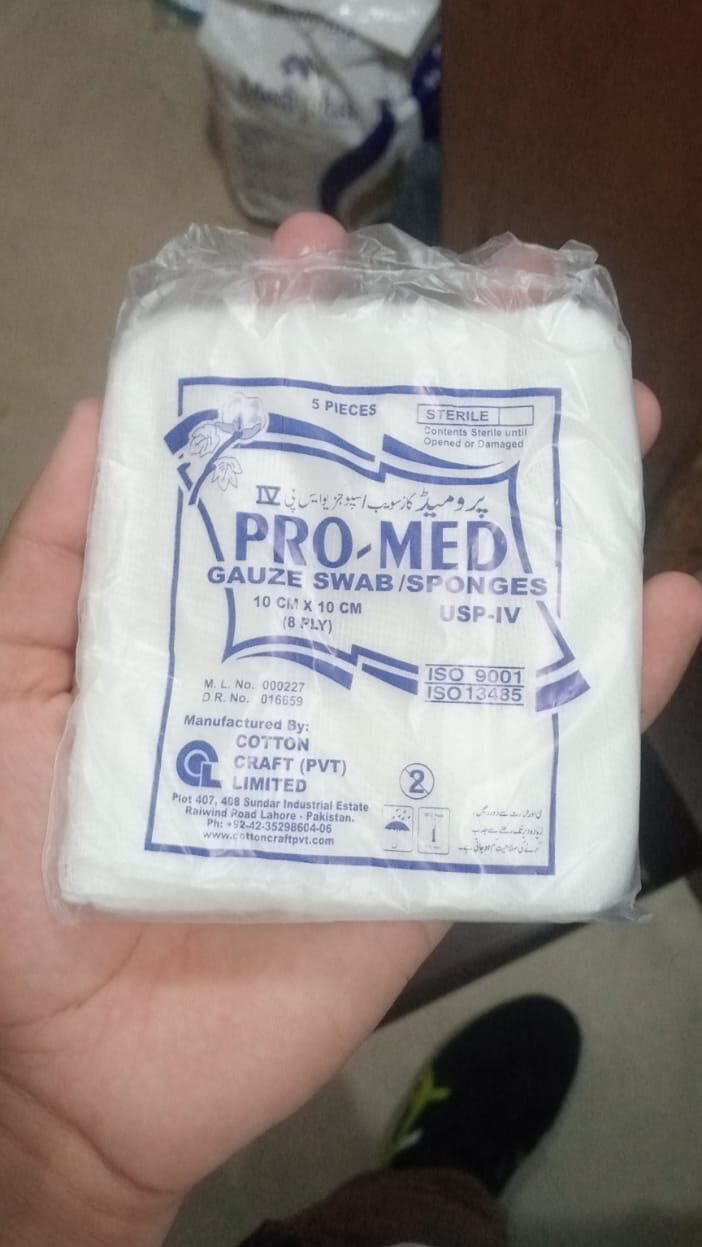
Surgical gauze is used as a dressing for wounds after cleaning the wounds with alcohol swabs and povidone, surgical gloves are placed on the wound to absorb the puss and cover the wound.
Crepe Bandages
These bandages are used to reduce pain like a sprained ankle.
Syringe
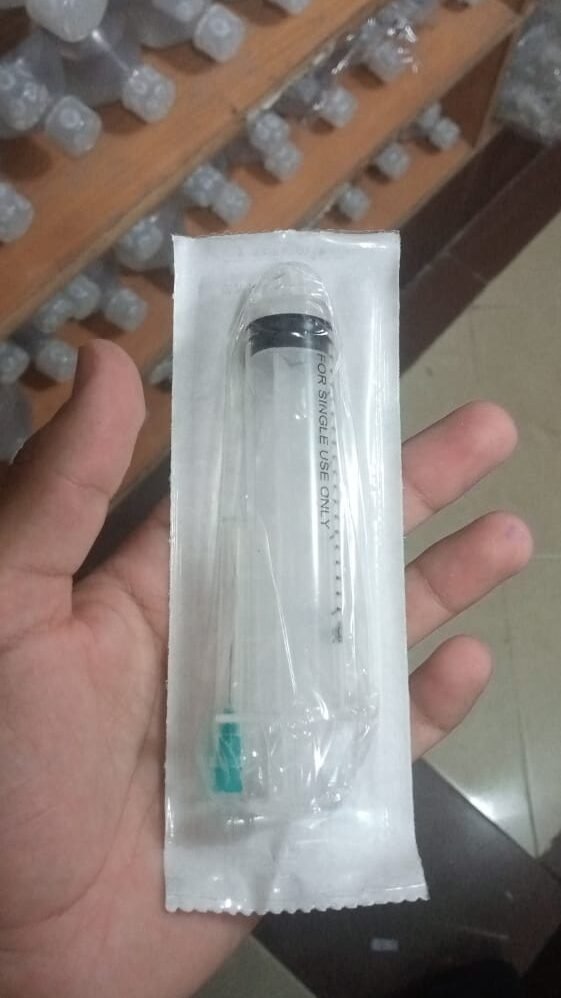
You can apply any disinfectant fluid or painkiller tube using the syringe so it’s also a necessary thing for a first aid kit.
Medications like
The mentioned medications are “Over-the-counter” Drugs, Means you can buy these medications from any chemist or medical store without a prescription.
Paracetamol (Painkiller)
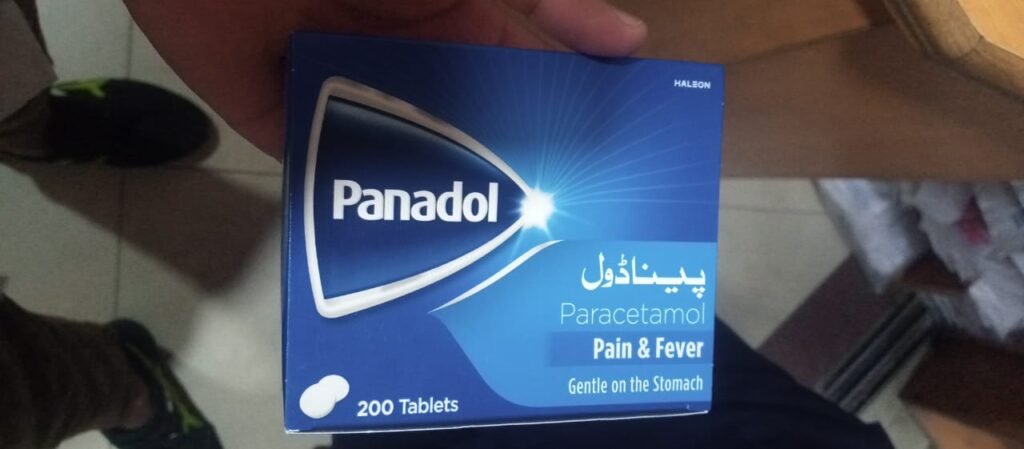
Don’t forget to bring 2 to 3 strips of paracetamol tablets. Paracetamol is an over-the-counter drug so you can get it without any medical practitioner prescription. Paracetamol is used to treat fever and headache.
Loperamide Hydrochloride (Antidiarrheal)
This drug is used to treat the diarrhea.
Ibuprofen (Pain killer)
Used to treat any kind of muscle pains.
Ibuprofen Ointment
You can apply it topically (on the skin) after absorbing it will get rid of any kind of pain so it is the best choice if you don’t want to get any medication orally.
Clarithromycin (Antibiotic for Sore throat)
If you are outdoors and during the trip because of dust mites or environments you may get respiration infection (common cold) during this you can get clarithromycin to get rid
Ciprofloxacin (Antibiotic for gastrointestinal infections)
If you are outdoors you may eat something that will affect your abdomen system and cause intestinal infections and gastrointestinal infections you can intake ciprofloxacin, because it is an antibiotic specifically made to treat intestinal-related infections.
Antibiotic Ointment
An antibiotic ointment can help you prevent infection growth and by applying it to the affected area you can avoid the growth of microbes.
Antihistamines
If you get any kind of allergy to any plant or food you can take an antihistamine
Acetazolamide
For treating altitude sickness.
Site note
Any medicine you decide to include in your backcountry first aid kit, make sure all of these medications are individually wrapped, dated, and labeled, and include a description of its intended usage. So you don’t have to guess when you’re out in the backcountry without Wi-Fi service or in an emergency condition.
Additionally, knowing how to use the items in your first-aid kit is just as important as having them. Take a basic first-aid course if you can, or review instructions for common treatments. I always make sure I’m familiar with the contents of my first-aid box and confident in handling minor injuries to ensure I’m prepared for any situation.
Conclusion
Camping in the forest can be an incredibly rewarding experience, offering a chance to reconnect with nature and escape the hustle and bustle of daily life. By following these tips and preparing adequately, you can ensure a safe and enjoyable adventure. Remember to research your area, pack the essentials, and always prioritize safety, from choosing the right campsite to purifying water and handling emergencies. Informing someone about your trip, practicing good wildlife safety, and honing your navigation skills will further enhance your camping experience. With the right preparation and mindset, you can make the most of your time in the great outdoors and create lasting memories. Happy camping!
You May Also Like
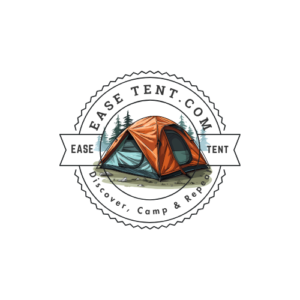
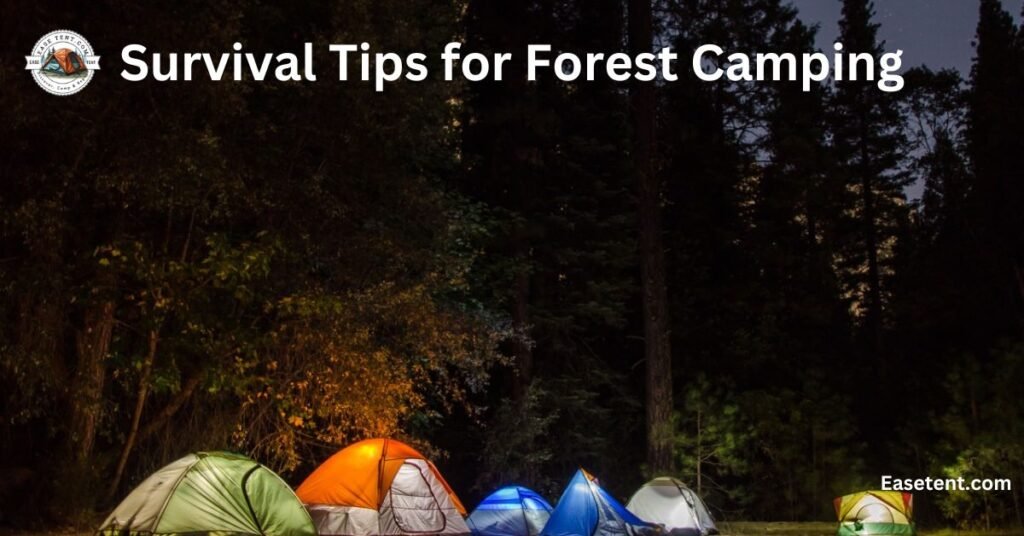
Pingback: Can Camping Make You Sick - Easetent.com
Pingback: Alone with Nature: "Top Tips for Privacy in the Wild"
Pingback: Camping with a New Tattoo: Risks, Precaution & Consideration
Pingback: Simple Tricks to Keep Camping Gears Dry - Rainy Camping
Pingback: Camping in Foggy Weather: Magical Trip or Hidden Risk?